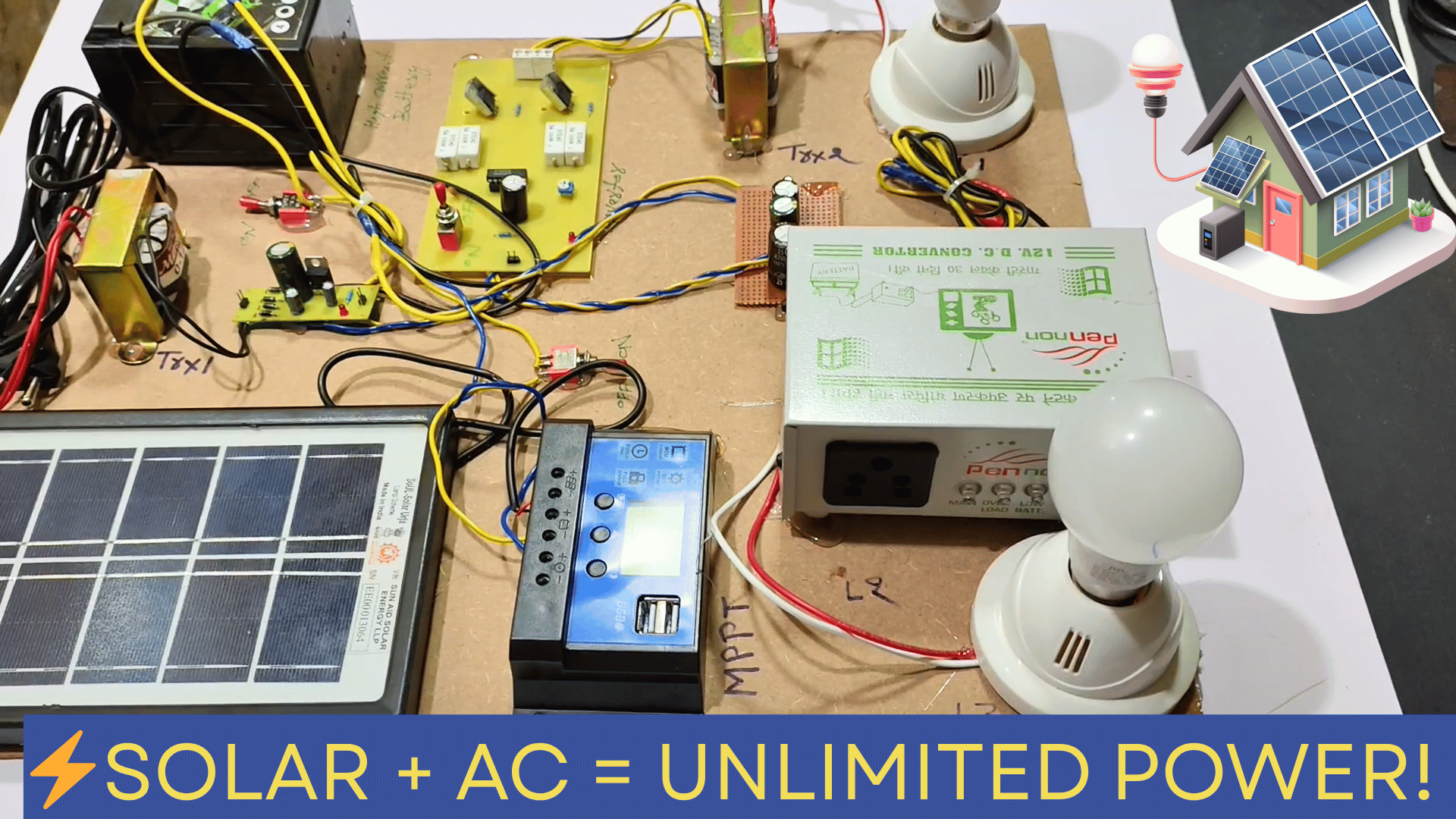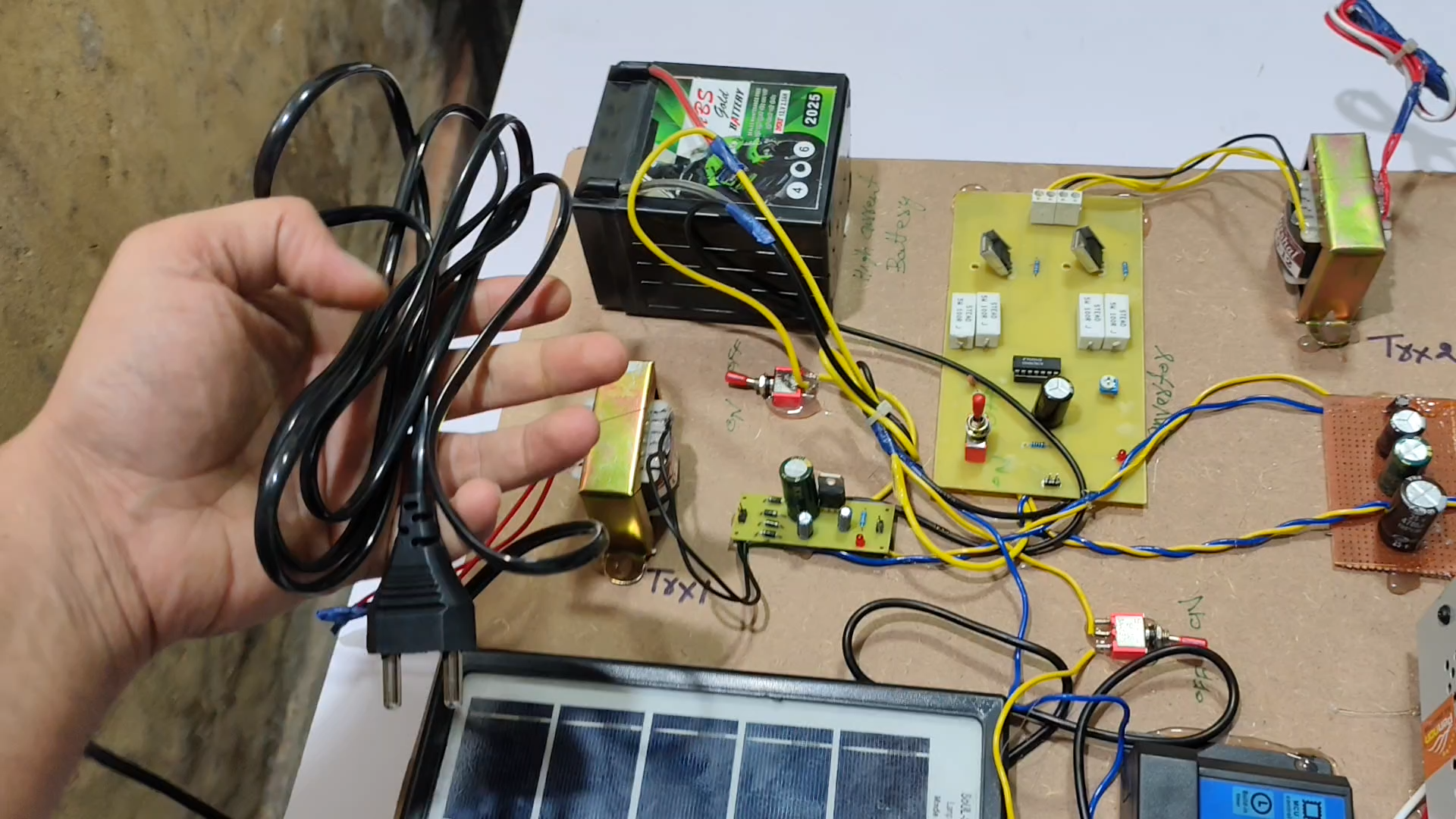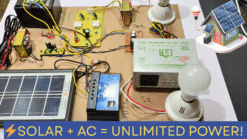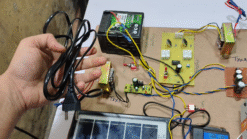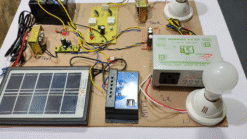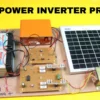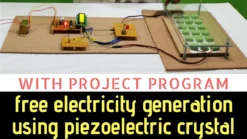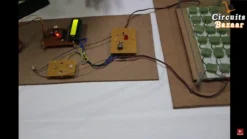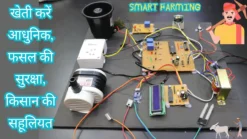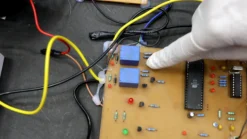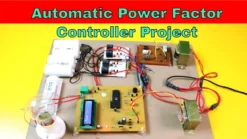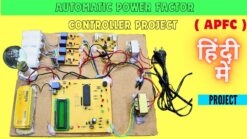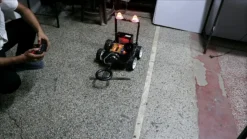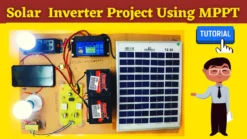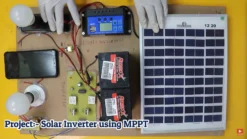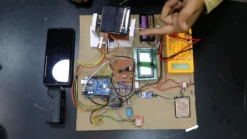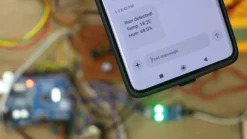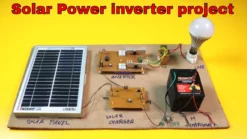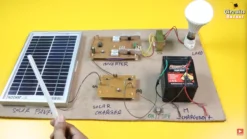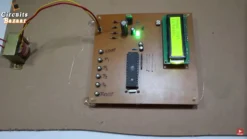MPPT Hybrid Solar Inverter Project – Dual Solar & AC Charging System ⚡🔋
₹7,500.00 Original price was: ₹7,500.00.₹5,800.00Current price is: ₹5,800.00.
🔋 MPPT Hybrid Solar Inverter Project is a ready-to-use and fully assembled innovation for engineering and technical students. This smart inverter can charge a 12V battery using both solar energy and AC mains, ensuring uninterrupted power. The system uses an MPPT module to maximize solar energy conversion, and an inverter stage to convert 12V DC into 230V AC power. Ideal for B.Tech, Diploma, ITI, Polytechnic, School and Research students.
Includes PPT 📄, Report 🧾, Future Scope 🔮, and detailed video tutorials 🎥.
👉 Perfect for final-year and innovative renewable energy projects.
20 in stock
MPPT Hybrid Solar Inverter Project is an advanced and practical renewable energy solution designed for students, innovators, and researchers in the field of Electrical Engineering. This project enables users to charge a 12V battery using both solar energy and AC mains, making it a highly reliable and smart hybrid power system.
🌞 Solar Charging Mode: The project uses an MPPT (Maximum Power Point Tracking) module to extract maximum energy from the solar panel. It efficiently converts sunlight into electrical energy, which is then stored in the 12V battery. The MPPT charger ensures high conversion efficiency and stable output for connected loads.
⚡ AC Charging Mode: When solar power is unavailable (night or cloudy conditions), the system switches to AC charging mode. The built-in transformer, rectifier, and voltage regulation circuit convert 230V AC mains into 12V DC, charging the battery seamlessly. This dual charging capability makes the inverter system highly reliable.
🔌 Inverter Stage: The core inverter circuit is based on IC 4047 and MOSFETs. The stored DC power from the battery is converted to 230V AC using a high-current inverter transformer. This allows users to run appliances like fans, bulbs, chargers, and small household or lab equipment.
🧰 Major Components Used:
- MPPT Module
- Solar Panel
- 12V Rechargeable Battery
- IC 4047 & High Current MOSFETs
- Power Transformer (230V AC)
- Rectifier & Voltage Regulation Circuit
- Switching and Control Components
🚀 Applications:
- Final Year Projects and Innovation Exhibitions
- School and College Demonstrations
- Renewable Energy Research
- Hybrid Solar-AC Backup Power Systems
🔮 Future Scope: The project can be upgraded by integrating IoT for remote monitoring, battery status tracking, and automatic switching. It can also be expanded to work with larger battery capacities and solar arrays, making it suitable for small homes or off-grid setups.
📽️ Project Video Tutorial: Watch on YouTube
🔗 Useful Links:
📦 What’s Included:
- Fully Assembled Project Kit
- PPT & Report
- Working Video
- Future Scope Documentation
- Support Material for Students
Whether you’re a B.Tech, Diploma, ITI, or School Student, this MPPT Hybrid Solar Inverter Project provides a hands-on way to learn renewable energy principles and inverter technology. Build your own reliable hybrid power solution and take your engineering skills to the next level! ⚡🔋
Q1. What is an MPPT Hybrid Solar Inverter Project and how does it work?
A. The MPPT Hybrid Solar Inverter Project is an advanced renewable energy system designed to intelligently manage power from both solar panels and the conventional AC mains supply. It uses MPPT (Maximum Power Point Tracking) technology to ensure the solar panel delivers optimal power, charging a 12 V battery efficiently. When sunlight isn’t available, the system automatically switches to AC mains to keep the battery charged. The stored DC energy is then converted into a stable 230 V AC output through a MOSFET-based inverter and a heavy-duty transformer. This dual-source hybrid configuration ensures uninterrupted power, making it ideal for academic demonstrations, exhibitions, and real-world renewable energy applications.
Q2. What makes this inverter project different from a regular solar inverter?
A. Unlike conventional inverters that rely on a single power source, this MPPT hybrid inverter is engineered with dual charging capability. It not only harvests energy from the sun but can also use AC mains as a secondary power source, ensuring continuous operation even during cloudy or nighttime conditions. The MPPT controller extracts maximum available energy from the solar panel, improving system efficiency. This unique blend of solar + grid charging and efficient DC-to-AC conversion makes it superior for both academic learning and practical implementation in rural electrification or backup power setups.
Q3. Who can use this project and in what applications can it be demonstrated?
A. This project is ideal for B.Tech, M.Tech, Diploma, Polytechnic, ITI students, school innovators, hobbyists, and renewable energy enthusiasts. It can be showcased in final-year engineering projects, innovation exhibitions, lab demonstrations, rural electrification prototypes, and startup concepts. Since it is fully assembled and tested, students can focus on understanding the circuit operation, power flow, and performance analysis rather than complex fabrication. It’s also perfect for viva presentations, classroom demonstrations, and research-based work.
Q4. What components are used in this hybrid inverter system and how are they integrated?
A. The system integrates key components such as an MPPT charge controller module, high-efficiency solar panel, 12 V lead-acid battery, IC 4047-based inverter circuit, high-current MOSFETs, step-up transformer, rectifier-filter unit, and voltage regulation circuitry. The MPPT module ensures maximum energy capture from the solar panel, while the inverter converts DC to 230 V AC output for running common loads like fans, bulbs, and chargers. All components are neatly assembled on a solid base, with proper labeling for easy explanation during viva or evaluation. The circuit is optimized for clarity and educational demonstration.
Q5. Can the system be upgraded or scaled for larger applications in the future?
A. Yes, the MPPT Hybrid Solar Inverter Project is designed with scalability in mind. Users can easily upgrade the capacity by adding higher wattage solar panels, larger batteries, and more powerful transformers. Additional smart features like IoT monitoring, automatic load transfer, and mobile app-based tracking can also be integrated. This makes it not just a one-time academic project but a strong base for research, innovation, and practical deployments in rural energy solutions, emergency power systems, and sustainable infrastructure initiatives.
| Weight | 3 kg |
|---|---|
| Dimensions | 35 × 35 × 8 cm |
Related products
Electrical Engineering Projects
Electrical Engineering Projects
Smart Farming Management System Project for Electrical Engineering
Best Sellers Engineering Projects
Electronics Engineering Projects
Wireless Landmine & Metal Detection Robot – Smart Defense Project for Students
Electrical Engineering Projects
Advanced MPPT Based Solar Inverter Project for Engineering Students
Electrical Engineering Projects
Best Sellers Engineering Projects
Solar Inverter Electrical Engineering Project – Buy Ready-Made Model
Best Sellers Engineering Projects
LCD Based Smart Electronic Voting Machine Project using 8051 Microcontroller

